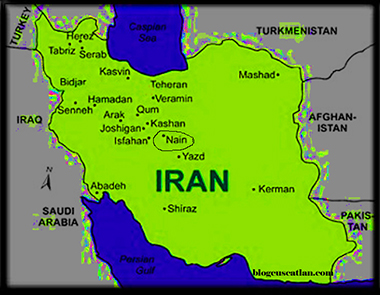Origin and history of the Nain rug
Nain rugs are one of the most unique pieces of Persian carpet weaving, which have a long tradition. The history of Nain carpets is closely linked to the city of Nain in central Iran, one of the most famous carpet-making centres. Although the city's weaving tradition is relatively young, dating back to the early 20th century, Nain carpets quickly gained a reputation among the world's most sought-after Persian carpets. The city's artisans use precise handwork and special techniques to produce rugs that are knotted from fine wool or silk, which represent one of the pinnacle of Persian rug weaving. The first Nain rugs were characterised by fine knotting and the use of pastel colours, which immediately distinguished them from other Persian rugs. Local weavers integrated geometric and floral patterns used in Islamic art into their carpets, creating unique and recognisable pieces. Over time, Nain rugs have become increasingly sought after, especially by collectors and those interested in luxury carpets. These carpets are highly valued not only in Iran, but also in international markets, as they reflect the uniqueness of handmade masterpieces and attention to detail.

The city of Nain and its weaving traditions
The city of Nain is located in the central part of Iran, close to the famous city of Isfahan, and has been known for its handicraft traditions for centuries. Although the history of carpet making in Nain is relatively recent, the people of the city quickly established the craft and refined their techniques. The original weaving tradition was more focused on the production of fine cloths and textiles, but carpet weaving quickly took over the main role in the mid-20th century. The rugs of the city of Nain became symbols of quality, elegance and sophisticated patterns. Local craftsmen use high quality wool or silk to create extremely intricate carpets. Unlike carpets made in other areas of the country, Nain rugs typically have lighter shades, often with cream, beige and light blue tones. Carpet weaving has become a mainstay of the city's economy, and Nain carpets have become symbols of the Persian carpet weaving tradition in the modern world.
The characteristic patterns and motifs of Nain persian carpets
The special aesthetic value of Nain persian carpets is mainly due to their carefully designed patterns and motifs, which follow the best traditions of Iranian carpet weaving. The most common patterns include geometric shapes and nature-inspired floral motifs, iconic elements of Persian art. These motifs are created using intricate and precise knotting techniques, which enhance the delicacy and detail of the carpets. One of the most distinctive patterns is the central medallion, which is placed in the centre of the carpets and is surrounded by a symmetrical arrangement of flowers, indas and arabesques. The medallion shape and the harmony of the pattern around it symbolise perfection and balance, which is a major theme in Islamic art. The colour palette of Nain persian rugs is also outstanding, with soft pastels such as cream, ivory, light blue and grey often used. These colours accentuate the elegance and timeless style of the rugs, and blend perfectly with the delicate, detailed patterns. Iranian carpets are thus not only functional objects, but also have an artistic value that can be the jewel of any room.
The popularity and value of Nain rugs in the modern world
Nain rugs are not only symbols of traditional Iranian culture, but are also very popular in the modern world. These handmade carpets are among the highest quality carpets available and are particularly popular with collectors, interior designers and decorators. The sophisticated patterns and bright colour palette of Nain carpets blend effortlessly into both modern and classic interiors, contributing to their increasing market value. On the international market, Nain carpets occupy a special place, as they not only reflect Iran's artisan traditions, but also hold their own in the global luxury carpet market. The value of handmade persian carpets is determined not only by their beautiful designs and fine materials, but also by the number of man-hours required to produce them.

